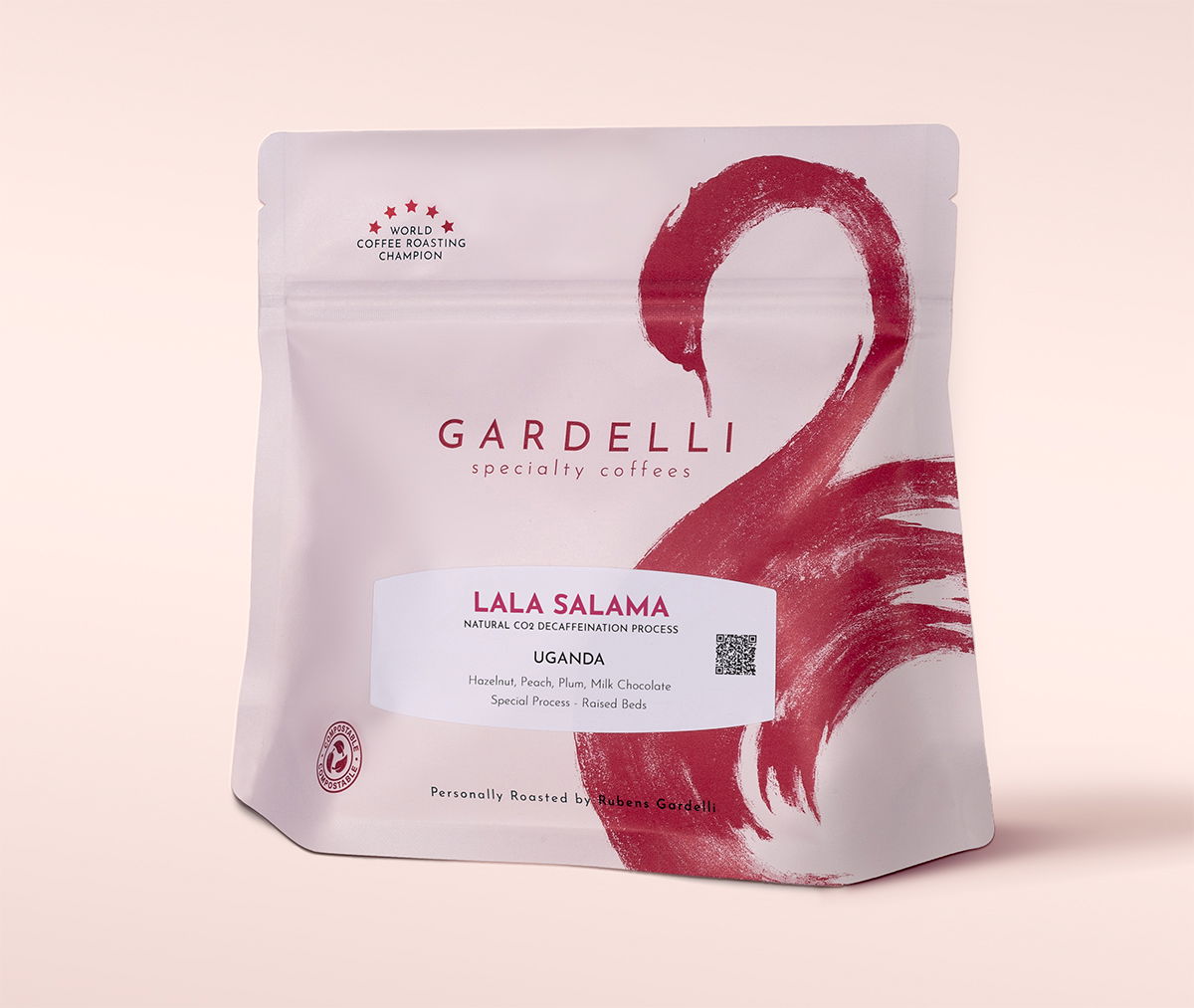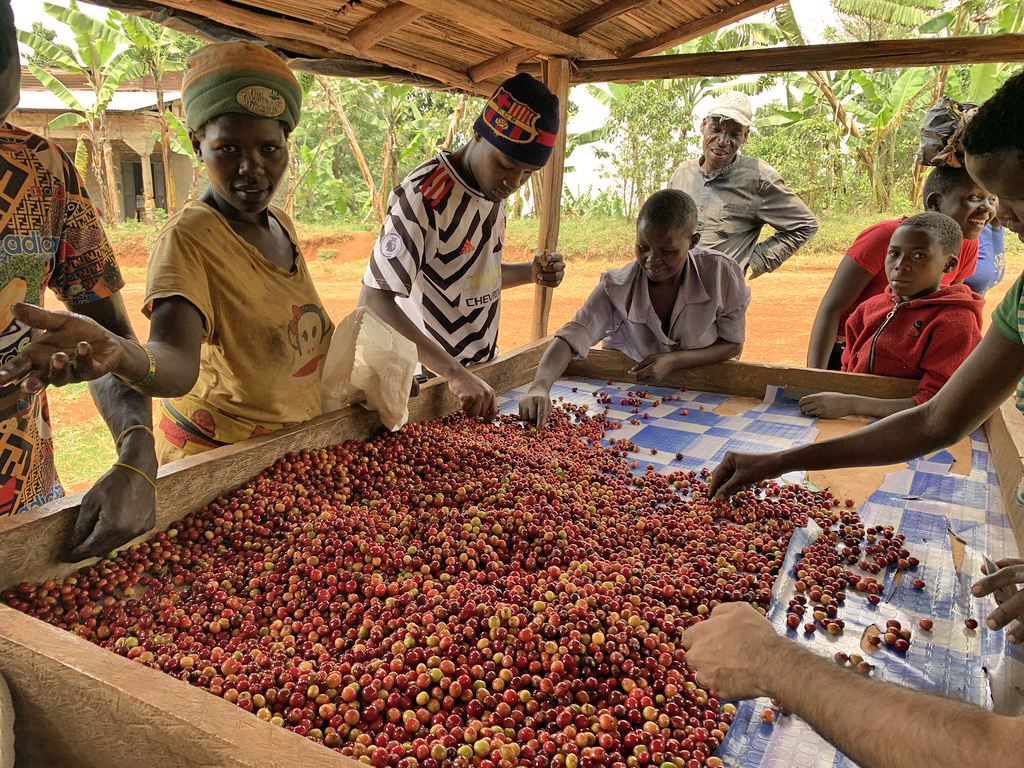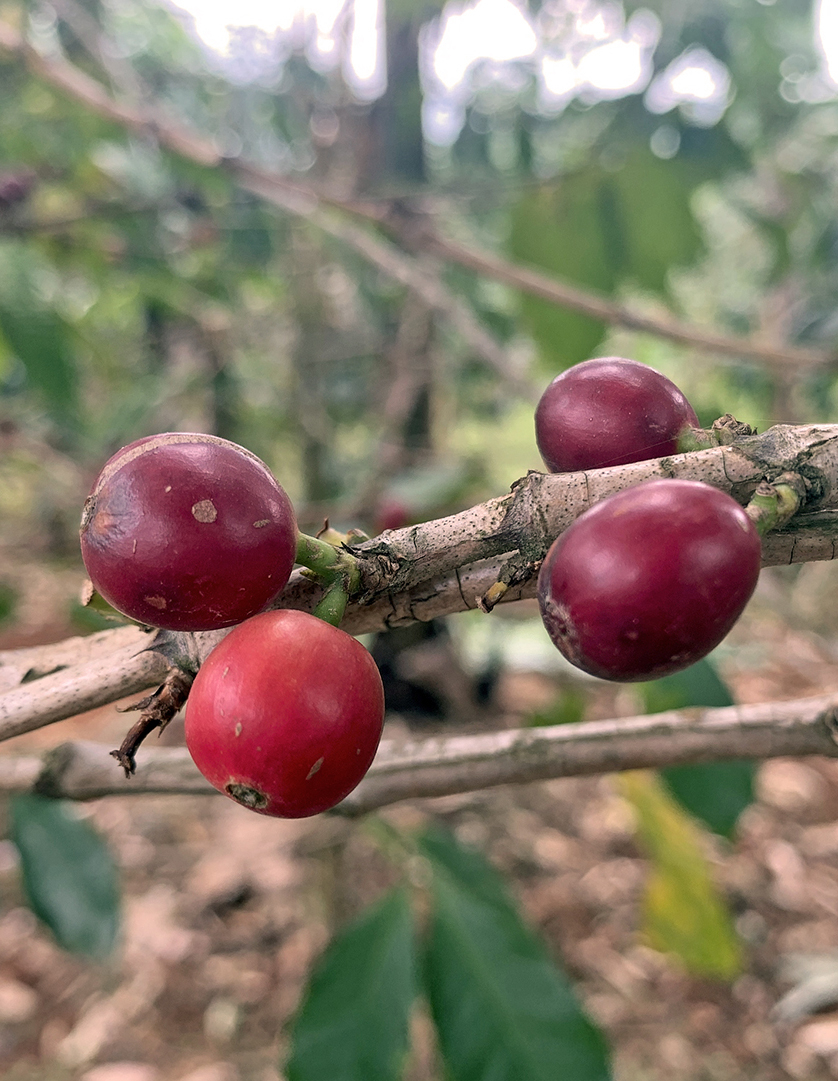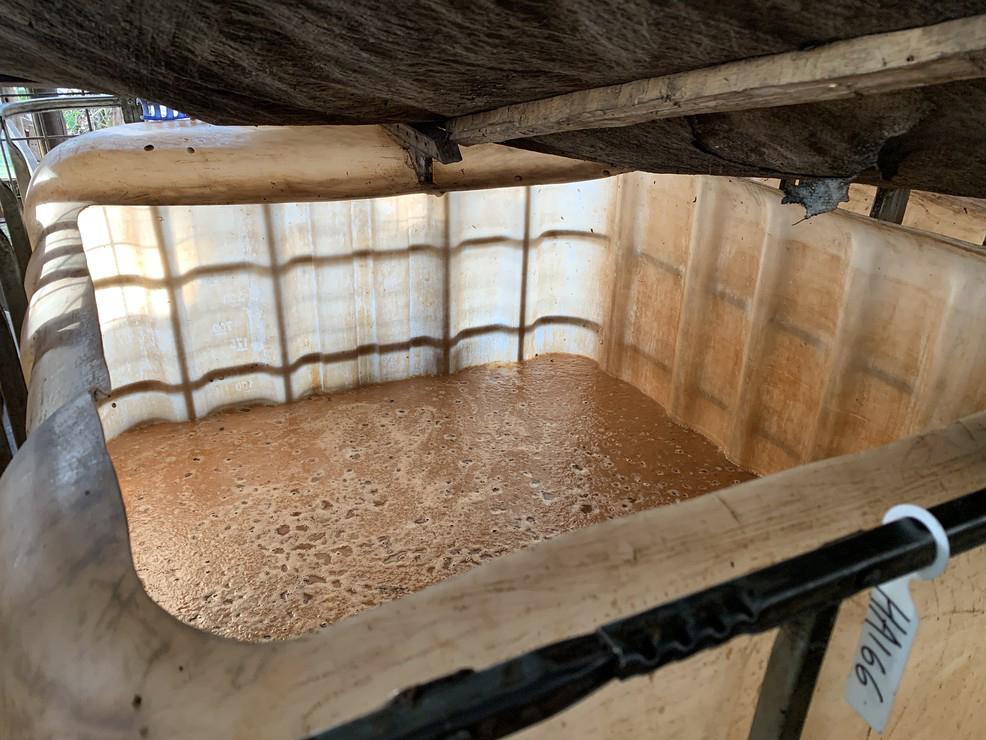












Uganda
Cup Notes: Hazelnut, Peach, Plum, Milk Chocolate
An amazing coffee, decaffeinated using the natural CO2 method, so full of fruity and sweet flavours that you wouldn't be able to distinguish it from your regular one. You could enjoy it all day.
Suggested for espresso and filter
when we roast
We freshly roast to order all coffees on Monday, Wednesday and Friday (excluding national holidays), and ship the same day! Cut-off time is 11:59pm (UTC+1) of the day before the roast day. *We only ship whole beans*
Lala Salama, which means 'Sleep Well' in Swahili, is a perfect name for our new offering of CO2 decaffeinated coffee from the African continent.
This lot is sourced from The Coffee Gardens project. Established in 2017, The Coffee Gardens aims to produce exceptional specialty coffee in an ethical way, providing a transparent and direct connection between coffee growers and consumers.
Micro-lots are created by combining day-lots, that is, coffees processed on the same day, with similar flavour profiles. As a result of this technique, a single farmer may contribute to multiple micro-lots.
For the past five years, The Coffee Gardens has worked closely with the farmers who produced this micro-lot. The decaf lot is named after the villages of Gombe and Zebigi, where many of the farmers reside. Last year, with the support of roasters, training sessions were organised to improve coffee cultivation under shade trees, promote sustainable agricultural practices, and enhance harvesting techniques. In July, over 8,300 seedlings of shade, fruit, and fast-growing trees were distributed. This year, training continues, and toilet blocks are being built for three primary schools in the area, including Zebugi-Busi Primary School.
Farmers manage coffee gardens of varying sizes, meaning their contributions to the lots differ. Mr Zesiro Micheal, from Gombe, was one of the largest contributors to this micro-lot, providing 967 kg of ripe red coffee cherries, while Mr Woniala Moses, from Zebigi, contributed 349 kg. Within hours of being picked, the cherries are transported to the station in 50 kg bags by “runners”—a team of over 160 men and women from the local community.

SL14
It was originally selected in Kenya the late 1930s at the Scott Agricultural Laboratories. Individual tree selections made at the Scott Laboratories in Kenya during the 1935-1939 period were prefixed “SL.” SL14 was selected in 1936 from a single tree labelled Drought Resistant II (D.R. II), and drought tolerance is a noted characteristic of SL14. Historical records documenting the origin of D.R. II were lost, but the seedlings were established at Kabete in 1933, and then widely distributed in areas east of the Rift Valley in Kenya. Recent genetic tests have confirmed that SL14 is related to the Typica genetic group. It is economically important in both Kenya and Uganda.
SL28
This is among the most well-known and well-regarded varieties of Africa. It was chosen at the Scott Laboratories Agricultural Laboratory in Kabete, now the National Agricultural Laboratory of Kenya. Between 1935 and 1939, Scott’s laboratory performed individual selection on 42 coffee plants of various origins. These coffee plants with names beginning with ‘SL’ (SL1… SL42) were selected and tested for yield, seed quality, drought tolerance, and disease resistance, with SL28 being selected in 1935 from a single Tanganyika Drought Resistant plant in the population.
According to historical archives, one employee of Scott Laboratories spotted a coffee type growing in the Moduli district that appeared to be drought and insect resistant. This seed was collected and returned to Scott Laboratories to determine its high drought tolerance. This coffee type was widely grown until SL28, a descendant, supplanted it. Molecular genetic tests have revealed that SL28 is connected to the Arabica Bourbon coffee (selections bourbon trees) variety, one of the core Arabica varietals (bourbon trees made).
NYASALAND
One of the oldest Arabica coffee varieties introduced to Africa. The variety originates from Typica introduced to Nyasaland (now Malawi) in 1878 from Jamaica. By 1891 there was a flourishing coffee industry in Malawi, but eventually declined because of the marginal climate, which is hotter and drier than is usual for Typica, and because of the high incidence of pests including white stem borer. Inexperienced farmers allowed the plants to overbear in the first years, causing a precipitous fall in yields that ultimately led to the abandonment of coffee in Malawi. Nyasaland was taken from Malawi to Uganda in 1910, where farmers also struggled with the variety. Early failure led to the widespread planting of Robusta in Uganda. But in recent years, there has been a small resurgence of Arabica growing on the slopes of Mount Elgon, where Nyasaland (locally called Bugisu) is an important variety for smallholders.

The Sparkling Water Decaffeination process is a natural and organic method that preserves the integrity of coffee while gently removing caffeine. Originally discovered by scientist Kurt Zosel in 1967 and later developed by the German company CR3 in 1988, this process uses natural carbon dioxide (CO₂) from ancient underground lakes combined with water to create ‘sub-critical’ conditions. This unique state allows carbon dioxide to act as a highly selective solvent for caffeine, ensuring that the essential flavours and aromas of the coffee remain intact.
The process begins with green coffee beans undergoing a pre-treatment phase, where they are cleaned, moistened, and expanded to open their pores. They are then exposed to pressurized liquid carbon dioxide, which, when combined with water, effectively forms sparkling water. This solution circulates through the beans, drawing out caffeine molecules while leaving other coffee components untouched. The caffeine-rich carbon dioxide is then separated through an evaporator, allowing the purified water to be recirculated for continuous extraction. Once the desired caffeine level is reached, the beans are gently dried to restore their original moisture content, making them ready for roasting.
This decaffeination method is entirely chemical-free, which means it is organic and safe for consumption. Unlike other processes, it preserves the coffee’s structure, flavour, and aromatic profile, making it ideal for specialty coffee. Additionally, it is environmentally friendly, as all by-products are 100% natural and recyclable. This ensures that coffee lovers can enjoy a decaf cup without compromising on quality or taste.
